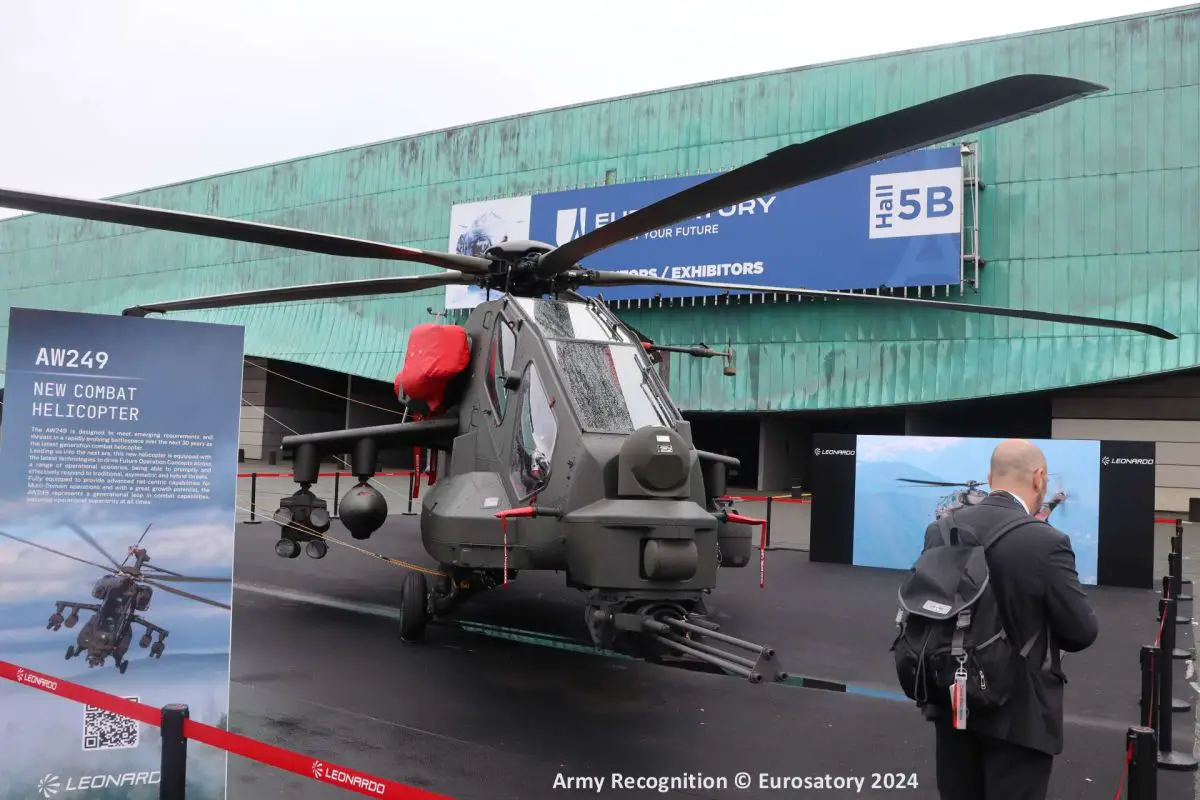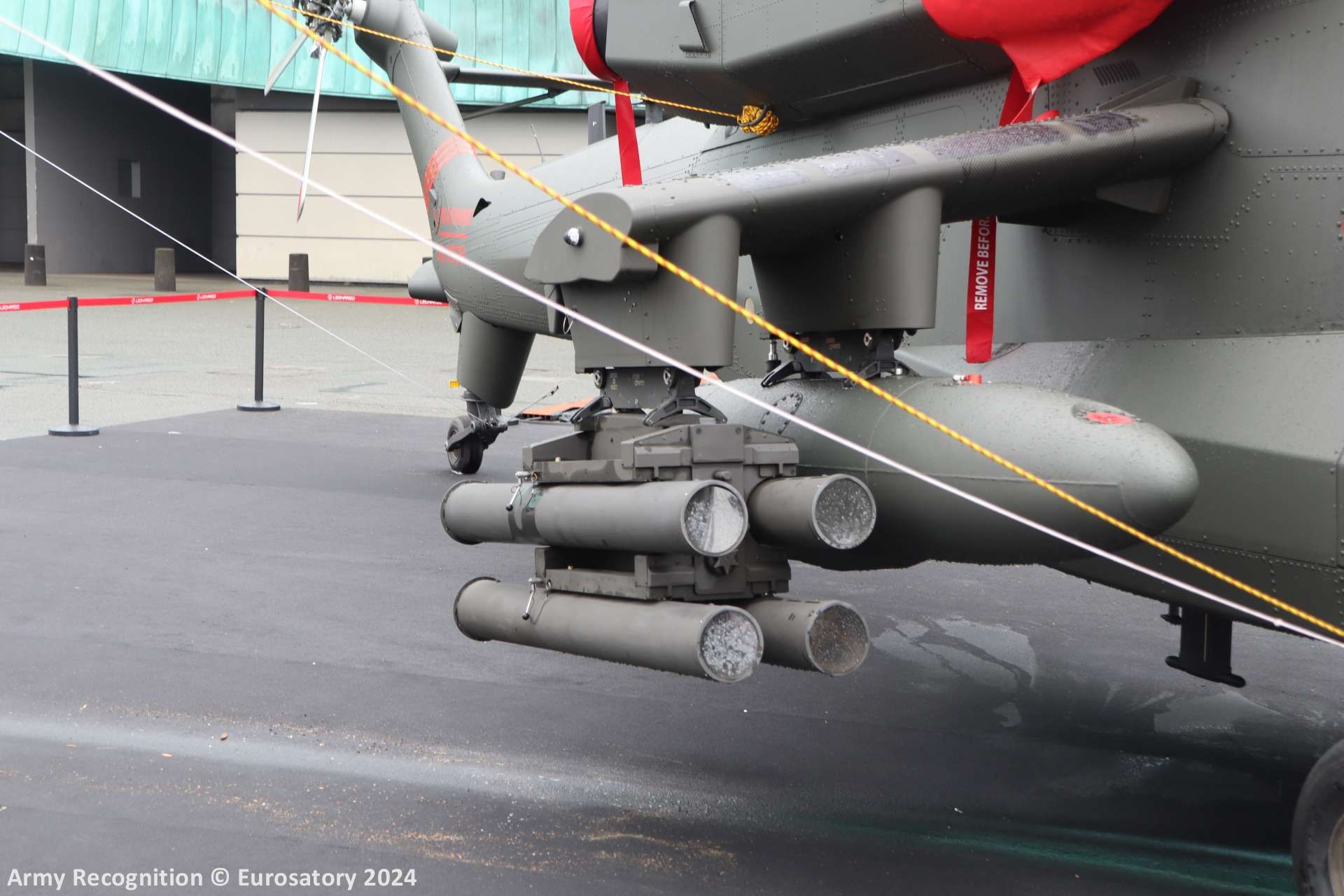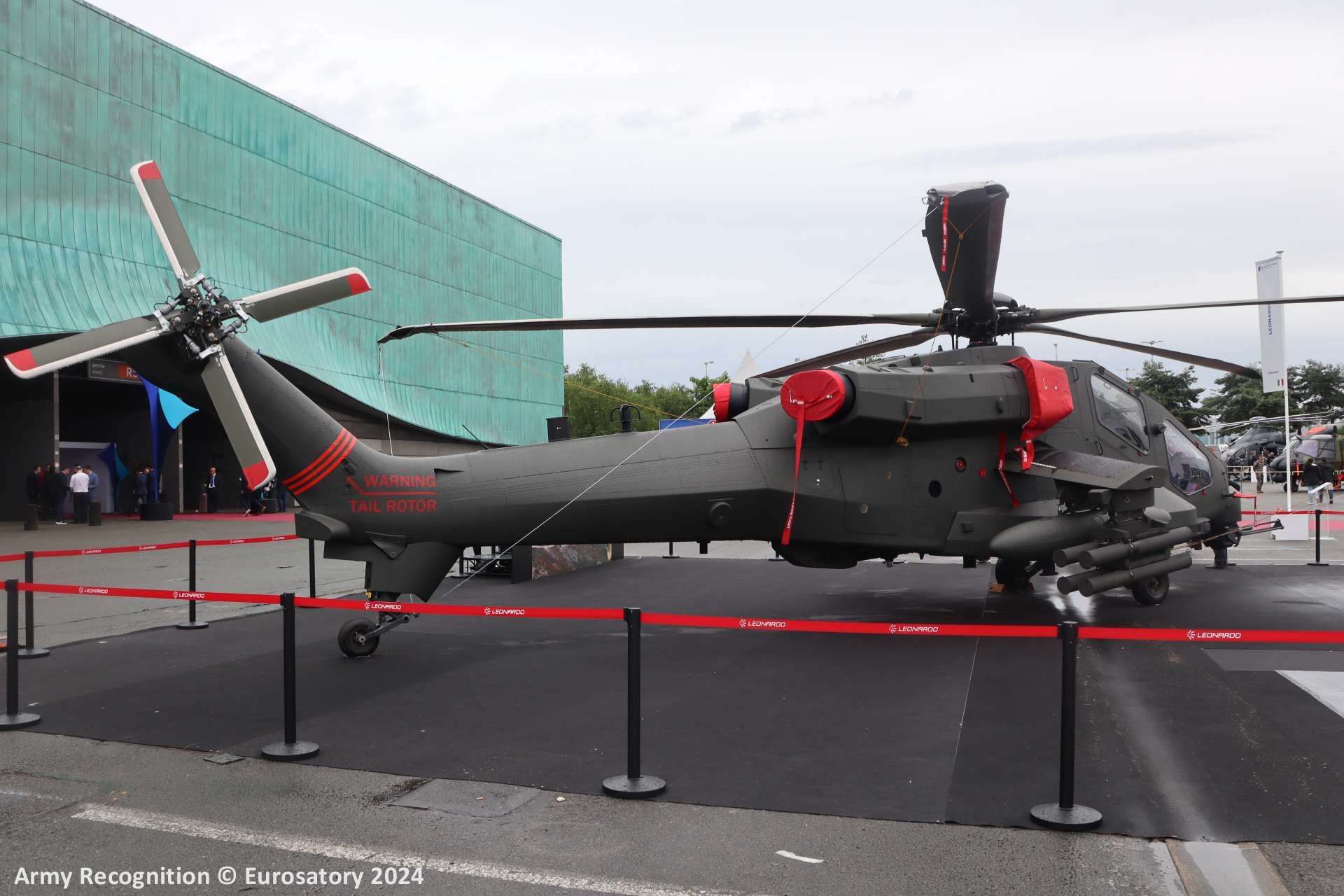Breaking News
Eurosatory 2024: Leonardo's new AW249 combat helicopter ready for 30 years of operational use.
At the Eurosatory 2024 exhibition, the Italian company Leonardo Helicopters unveiled a new combat helicopter, the AW249. Designed for operational use in evolving scenarios over the next 30 years, the AW249 features enhanced speed, range, and payload capacity, making it suitable for the demands of modern military operations. It supports full digital military networking for integrated multi-domain operations and allows for crewed-uncrewed teaming with Unmanned Air Vehicles (UAVs).
Follow Army Recognition on Google News at this link

The new AW249 combat helicopter supports full digital military networking for integrated multi-domain operations and allows for crewed-uncrewed teaming with Unmanned Air Vehicles (UAVs). (Picture source: Army Recognition)
The helicopter is equipped with a battle management system that provides an integrated tactical picture from all mission and information management systems, enhancing situational awareness. The AW249 can operate in all environments, day or night, and perform multiple missions. It is designed to identify and engage enemy targets with a range of weapons while maintaining safety standards set by the European Defence Agency, NATO, and EASA. The mission system, developed with input from military crews, aims to reduce pilot workload and increase mission capacity.
The AW249 is designed for the future battlespace, featuring navigation, day and night mission, and fire control systems, as well as UAV management capabilities. Its open systems architecture allows for growth potential and includes advanced communications and a battlespace management system to enhance situational awareness and safety. Key features include self-sealing fuel tanks, an enhanced Human-Machine Interface (HMI), an integrated mission system, a Pilot Night Vision System (PNVS), an Observation and Targeting System (OTS), a 20 mm 3-barrel cannon, and fully articulated main and tail rotors.
Major systems of the AW249 include multi-core touchscreen large area displays for situational awareness, precise targeting and piloting sensors, an LTE gateway for data transfer, software-defined radios with civil and military waveforms, high-frequency radio, wide-band line-of-sight datalink for UAV control, Tactical Data Link 16, and a multi-sensor-based flight management system. It also offers performance-based navigation for civil airspace operations and external auxiliary fuel tanks for extended range.
The ergonomic cockpit of the AW249 features next-generation avionics integrated into a digital battlefield management system. The avionics include large area displays, enhanced display control units, hands-on controls and sticks, and an intuitive interface. The helicopter's weapons systems include guided and unguided 70 mm rockets, air-to-air infrared-guided missiles, air-to-ground radiofrequency or fiber-optic guided missiles, and a 20 mm 3-barrel cannon. The helicopter supports multiple mission capabilities, including Intelligence, Surveillance, Target Acquisition, and Reconnaissance (ISTAR), aerial escort, close air support, air interdiction, and fire support.

The helicopter's weapons systems include guided and unguided 70 mm rockets, air-to-air infrared-guided missiles, air-to-ground radiofrequency or fiber-optic guided missiles, and a 20 mm 3-barrel cannon. (Picture source: Army Recognition)
The AW249's design prioritizes safety and survivability with ballistic damage-tolerant rotors and drivetrain, armored crew seats, and ballistic-damage-tolerant displays. Its fuel system includes self-sealing bladders, isolated tanks, and a smart transfer subsystem. The helicopter meets MIL-STD crashworthiness standards with high descent rate landing gear, energy-absorbing structures, crashworthy crew seats, and fuel tanks. Critical systems are designed with redundancy, separation, segregation, and damage tolerance.
The AW249's self-protection suite includes anti-jamming capabilities, low observable radar and paint finishes, automatic electronic warfare detection with chaff and flare, and frequency agile radios. It is interoperable with all air and ground assets, sharing tactical information within a digital network. The helicopter's net-centric capabilities include COMSEC and TRANSEC communications, software-defined radios, new generation IFF, Tactical Data Link 16, wide-band datalink line-of-sight, and an LTE gateway.
Specifications of the AW249 include a maximum takeoff weight of 8,300 kg, a useful load of 2,800 kg, engine ratings with an all-engines operating (AEO) take-off power of 2,503 SHP and a maximum continuous power of 2,274 SHP, and transmission ratings with AEO take-off power of 3,148 HP and AEO max continuous power of 2,907 HP. The helicopter measures an overall length of 17.63 meters, an overall height of 4.26 meters, an overall width of 4.6 meters, and a rotor diameter of 14.6 meters.
In terms of performance, the Leonardo AW249 combat helicopter reaches a maximum cruise speed of 287 km/h (155 knots), a maximum range of 796 km (430 nautical miles), a maximum endurance of 4 hours and 5 minutes, with a take-off and landing ceiling ranging from -1,000 feet to 15,000 feet, a flight ceiling of 20,000 feet, and a rate of climb of 2,350 feet per minute.

The AW249's design prioritizes safety and survivability with ballistic damage-tolerant rotors and drivetrain, armored crew seats, and ballistic-damage-tolerant displays. (Picture source: Army Recognition)


























